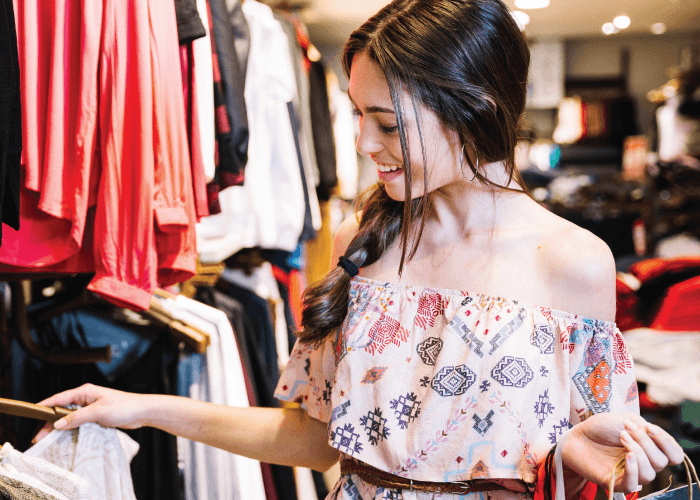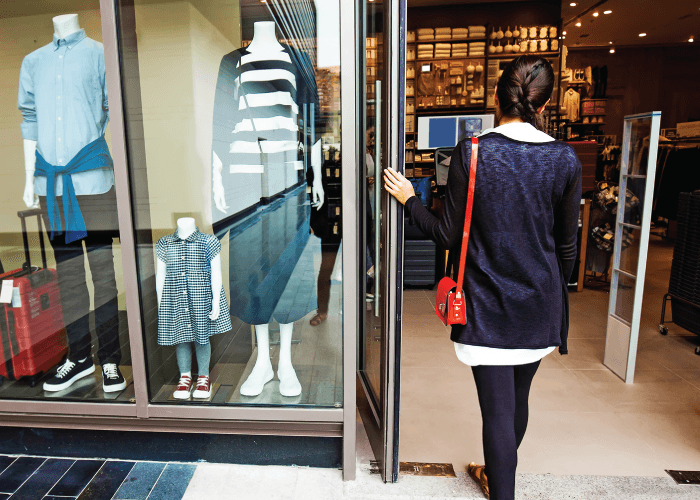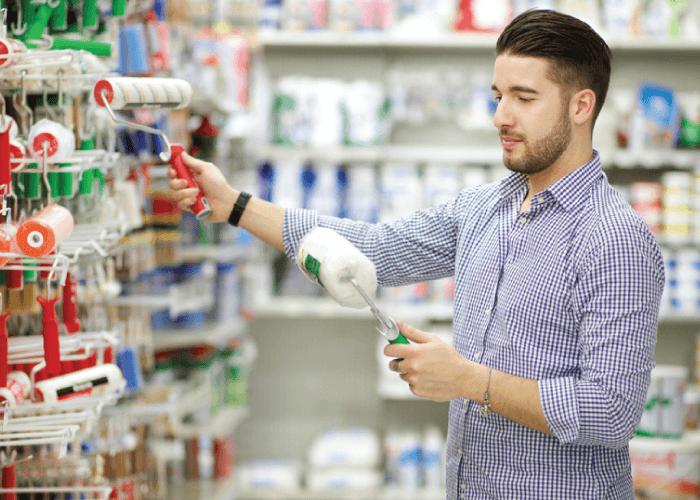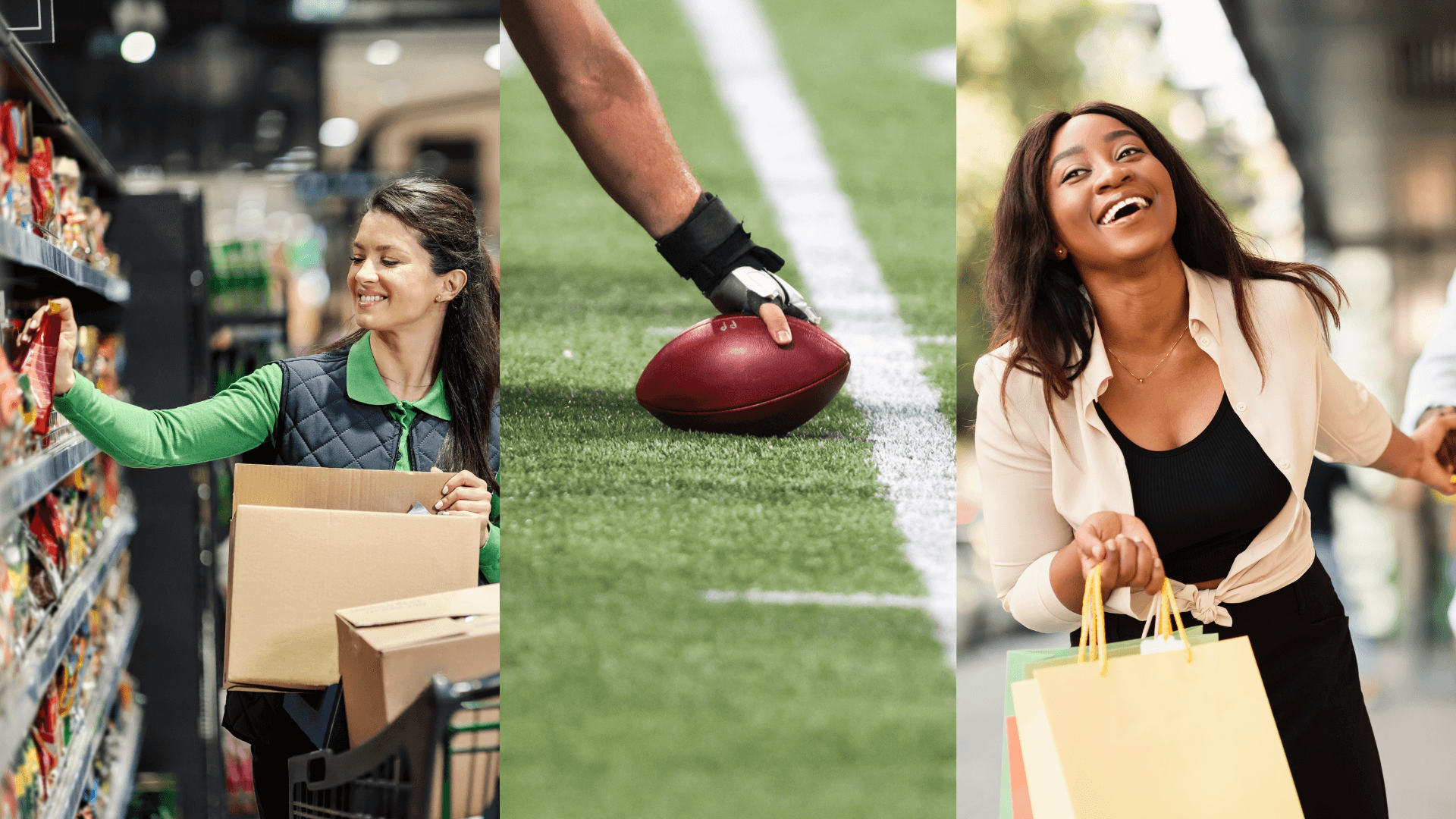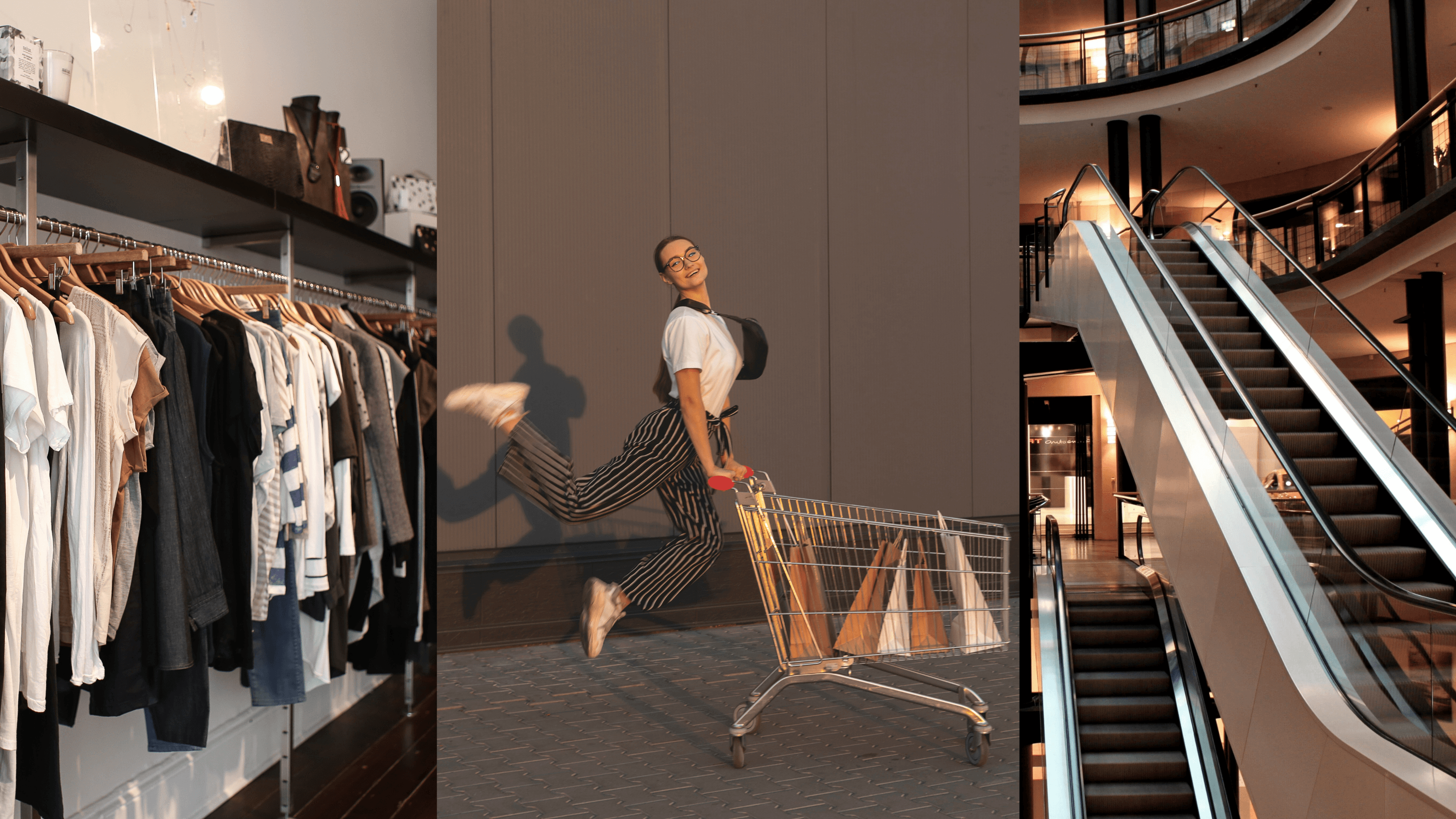Visual Merchandising Essentials for Fashion Retailers
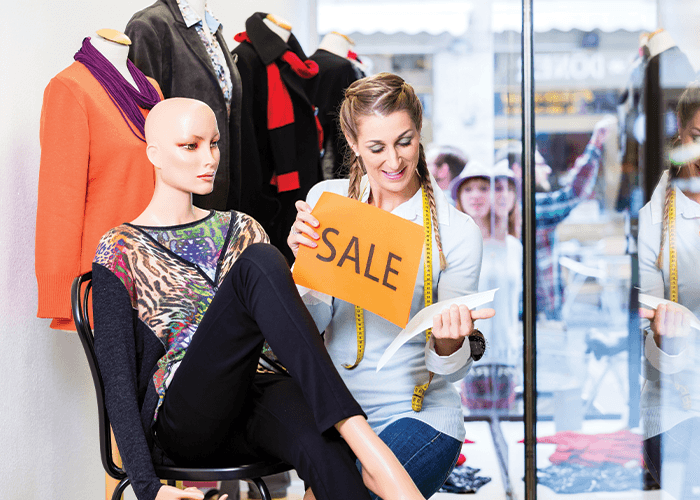
On this page
So, you have an amazing clothing brand, you've found a storefront at a strategic location, your products have been made, delivered, stocked up, and you're ready and excited to make some sales? Without enticing window displays encouraging the maximum amount of possible customers into the store, you will struggle to make your targets and will be missing out on opportunities to upsell accessories. Below are some essential tips for skillful displays.
First impressions
First impressions really count, whether at a job interview, on a date, or trying to attract more customers into your store. Before you even try herding people inside, you need to make sure your store can be noticed by potential consumers. This is why entrances and window displays are key. The more window space, the more products you can display to the public, so search for a building that has adequate space. Natural light will help to beautifully illuminate your storefront, so again, location setting is important.
Another thing to consider is a marquee or a canopy. It can protect your sparkling clean windows from the rain, dirt, direct sunlight, and can also shelter passersby whilst they take the opportunity to ogle your wares. An added benefit is that you can include extra signage and lighting. But be careful with the style and size of your marquee - it's important not to block all the hard work you put in to your window display in the first place.
Comprehensive layout
A comprehensive layout plan involves all areas of the store, from window display to each individual section of clothing and to the architectural aspect of the building. A striking window display that is neatly and clearly presented will help customers to make a decision in a few short seconds whether to come in and potentially buy products. The budgets for displays can vary, but display concepts should be based on the season, the occasion (such as vacations, Valentine's Day etc.), and events such as New Year sales.
The inside layout should influence customer movement and lead them to promoted and highlighted merchandise, as well as create moments for communication and product interest. Every item should be easily accessible and care should be taken to not cause overcrowding.
In addition, planograms can be useful tools to help plan and visualize wall displays for all sections of the store. A floor map will also be a useful tool to help decide where these sections should go. Working directly off these tools, in-store signage and labeling can then be implemented to guide shoppers around.
Welcoming atmosphere
A welcoming atmosphere works more on a subconscious level, making shoppers feel comfortable in-store thanks to the atmosphere it exudes. Successfully achieving this goal will mean they will want to stay longer in the store and be in a better mood to consider making purchases.
One of the most effective techniques involves music. Contrary to fast food restaurants, retailers often play slow tempo music which induces relaxation. The type of music selected should match the style of the shop and fall in line with its branding and clientele.
Another technique that is rarely thought of is aroma and shoppers' sense of smell. Surprisingly, this can be one of the main considerations separating a brand from the others, as it's working on a different playing field. Some positive responses to smells include relaxation and calmness, which can be the influence of smells such as cinnamon or lavender.
Fashion consciousness
It's imperative to keep up to date with the latest fashion trends and to use initiatives to anticipate future changes. Visual merchandisers put their skills to good use by perfectly styling mannequins and their surroundings to draw attention to the store. This part of the job is very fun and creative and allows designers to put a piece of themselves into the display.
Many fashion-conscious professionals are being groomed through bachelor of arts in fashion design programs, developing the skills, experiences and networks to promote independence, awareness and the cultivation of ideas relevant to the global fashion industry. Past trends often come back into fashion with a twist, and coupled with modern techniques joining the fray, it makes the understanding of fashion, as a whole, crucial.
Brand awareness
You want your brand image and message to stick in the minds of shoppers, and of anyone who has heard of you. This is your global identity and it's important to be synonymous with the right style and feeling. Signs, logos and slogans will attract attention to your storefront, but it's also important to continue the theme throughout the inside of the store. Appropriate signage can be coupled with imagery, not only of specific outfits being modeled, but of iconic photography indicating the brand's affiliations with lifestyle. This could be anything from basketball to sailing, from urban to country life.
Uniformity helps the flow of your theme and the flow of shoppers around the store. Consider a palette of 3 to 4 colors in order to not confuse or distract shoppers' eyes away from your products. Shapes should also remain consistent throughout.
All in all, visual merchandising incorporates many different elements and is absolutely essential to maintaining and increasing sales, as well as creating a brand identity. It is used in all types of stores, but is especially important to be understood in the ever-evolving fashion industry, given its highly visual product appeal.
About the writer: Jennifer Hahn Masterson is a senior business strategist, holding an MA degree in business communication. She is always doing her best to help her clients find their place in the ever so competitive business arena.
Join the #retail, #SmartStore & #ConnectedJourney conversations on Twitter @RetailNext, as well as at www.facebook.com/retailnext.
About the author:

Jennifer Hahn Masterson
